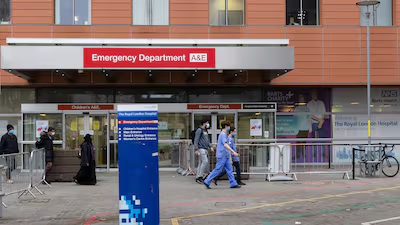
Infections are growing by between 3 to 6 per cent per day, new data released by the UK Health Security Agency (UKHSA) show. EPA.
Infections are growing by between 3 to 6 per cent per day, new data released by the UK Health Security Agency (UKHSA) show. EPA.
UK Covid infections increasing by at least 3% per day
UK Health Security Agency say R rate is now estimated to be between 1.2 and 1.5
